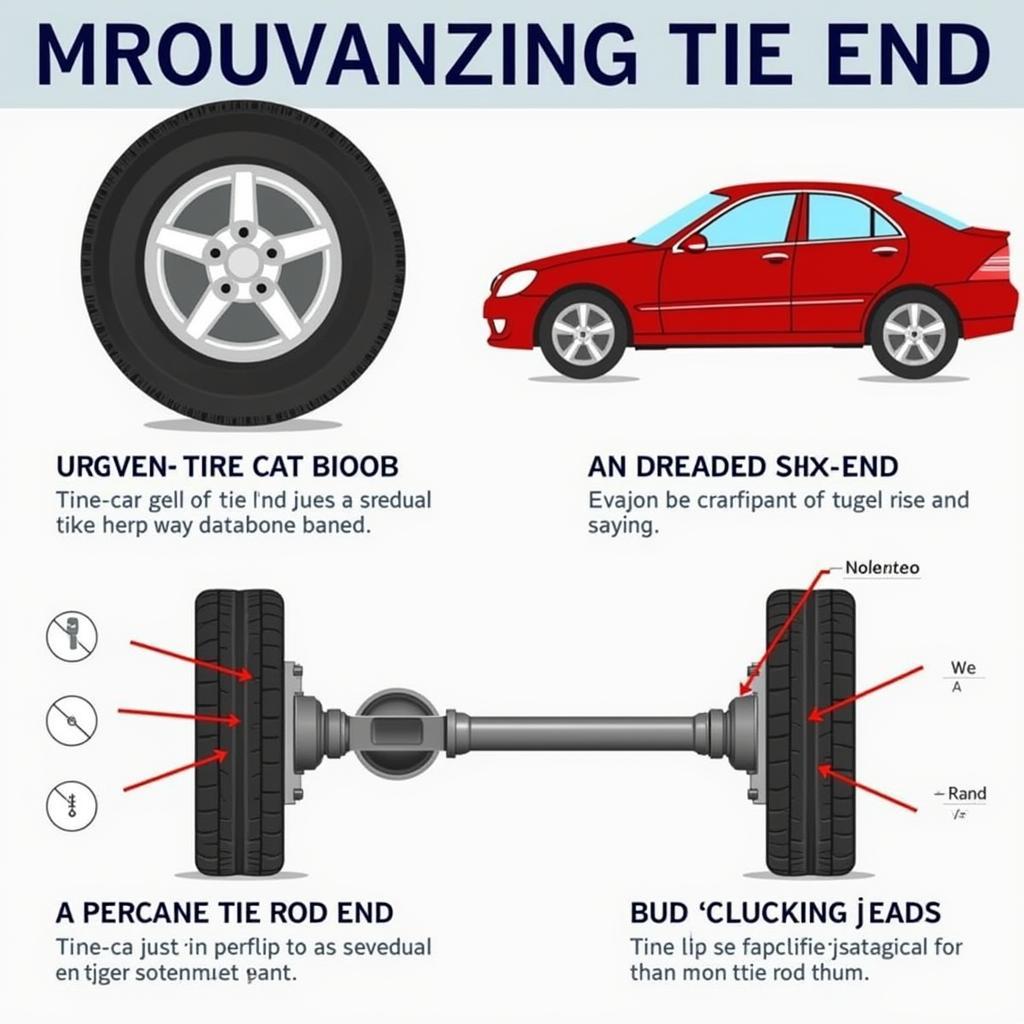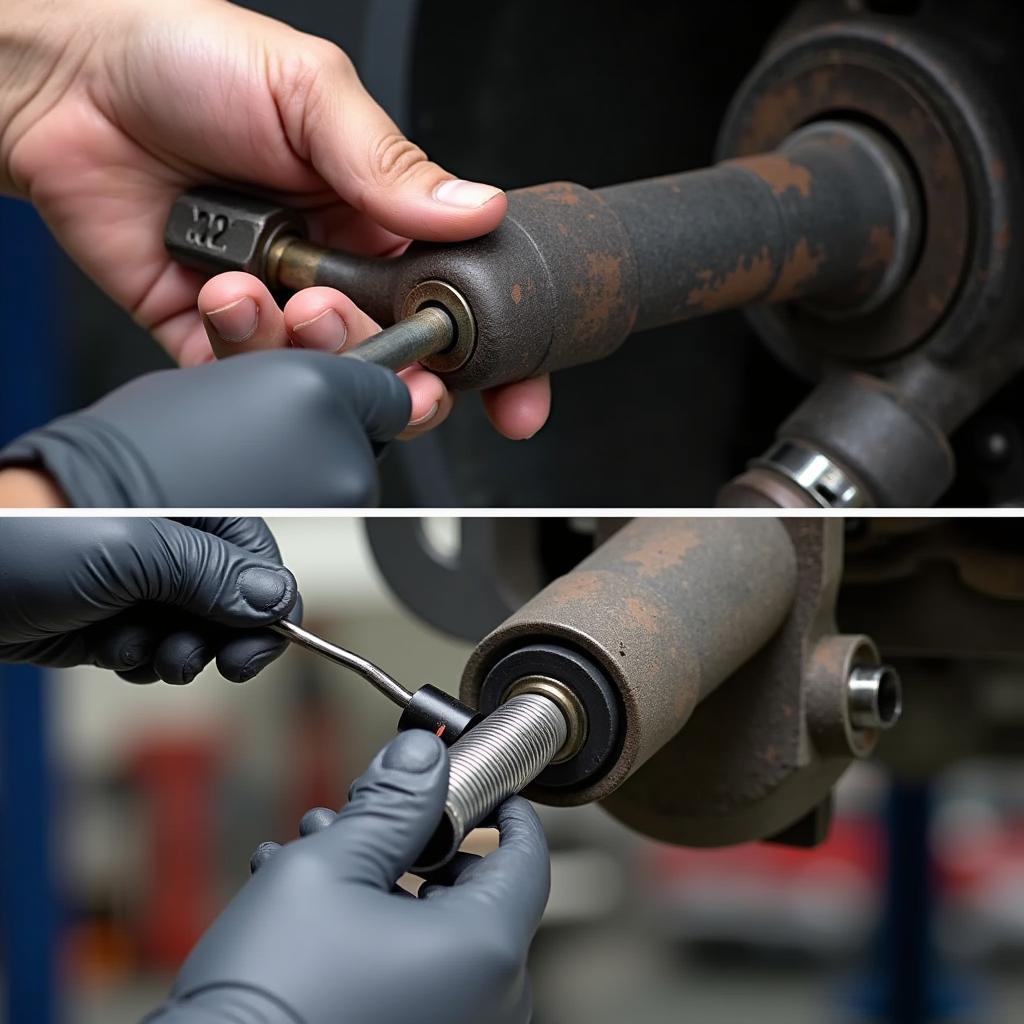The tie rod end, also known as the axial joint, is a small but essential component in your vehicle’s steering system. It connects the tie rod to the steering knuckle, enabling the transfer of steering movements to the wheels. A properly functioning tie rod end is therefore indispensable for precise steering response and safe road handling.
What is a Tie Rod End and Why is it So Important?
Imagine driving your car on a winding country road. To navigate the curves, you turn the steering wheel. This movement is transmitted via the steering column to the steering gear. From there, the force is transferred to the wheels via the tie rods and tie rod ends. The tie rod ends act as pivot points, converting the rotational movement into a linear motion, allowing the wheels to adjust according to the steering input.
“A worn tie rod end can have serious consequences for driving safety,” warns Dr. Markus Schmidt, automotive expert and author of the book “Modern Vehicle Technology.” “Steering becomes imprecise, and in extreme cases, the joint can even fail completely, which can result in a loss of control over the vehicle.”
Signs of a Defective Tie Rod End
A defective tie rod end usually becomes noticeable through various signs. Pay attention to the following symptoms:
- Clicking Noises: If you hear a clicking or knocking sound when steering, especially at low speeds or when driving over bumps, this may indicate a defective tie rod end.
- Unusual Steering Behavior: If the vehicle reacts sluggishly or vaguely to steering movements, this may be another indication of a worn tie rod end.
- Uneven Tire Wear: Tires that are worn on one side, especially at the tire edges, can also point to a defective tie rod end.
If you notice any of these signs in your vehicle, it is advisable to visit a workshop immediately.
 Symptoms of a defective tie rod end: noises, steering issues, and uneven tire wear
Symptoms of a defective tie rod end: noises, steering issues, and uneven tire wear
Diagnosis and Repair of the Tie Rod End
The diagnosis of a defective tie rod end is usually made by a visual inspection and a so-called shake test. In this process, the vehicle is lifted, and the tie rods are checked for play. If excessive play is found in the tie rod end, it must be replaced.
Replacing the tie rod end is usually a straightforward and inexpensive repair procedure. However, it should only be carried out by a qualified professional, as the correct adjustment of the tie rods is essential for safe driving behavior.
Regular Maintenance Prevents Problems
As with many other vehicle parts, regular maintenance also prevents problems with the tie rod end. Have the tie rods and tie rod ends checked by a professional as part of the inspection. This way, you can ensure that your vehicle is always safe and reliable on the road.
 Mechanic performing maintenance on a tie rod end in a workshop
Mechanic performing maintenance on a tie rod end in a workshop
Are you looking for professional support for the repair or maintenance of your vehicle? At autorepairaid.com you will find competent car experts who will be happy to help you with advice and assistance. Contact us today!
